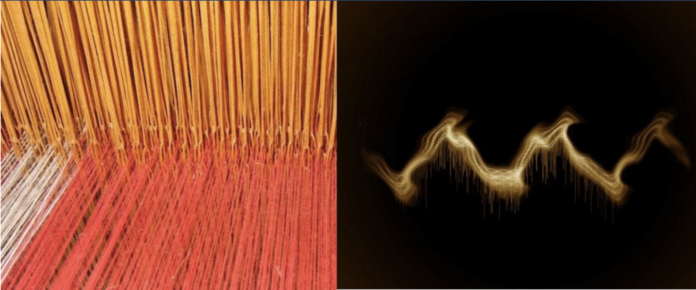When one considers the relationship of sound to textiles, one’s focus can shift scales, from the sound of fabric moving over skin to wearable sound producing technology. Ever present, sound has only in the last century been framed in terms of art and its vocabulary, its sensory and expository qualities explored and incorporated in contemporary art works and theory. As the discipline of sound art develops and becomes more common, artists, including those working in textiles, are exploring ways to relate to and collaborate with sound. As cross-disciplinary and cross-medium explorations flourish, there is great potential for new compositional and production techniques. Art forms using tools to explore and represent community, space, and storytelling offer points of entry to influence new modes of making.
I am personally very interested in textiles and the functional elements that present themselves when considering different fabric usages. As a means to explore my interests and the design opportunity, this article divulges various techniques used by artists to explore the parallel between textiles and sound composition. While the vast majority of the article details generating sound opposed to absorption and management, this type of creativity brings to light a particular area of material usage that could be helpful. How can textiles be used to create privacy in a sound-managed environment? Can textiles provide white noise that workers can listen to while working? Are ambient noises beneficial for an outdoor workspace? All of these questions were inspired by this article and helped me become aware of a new and exciting branch of creativity to explore.




